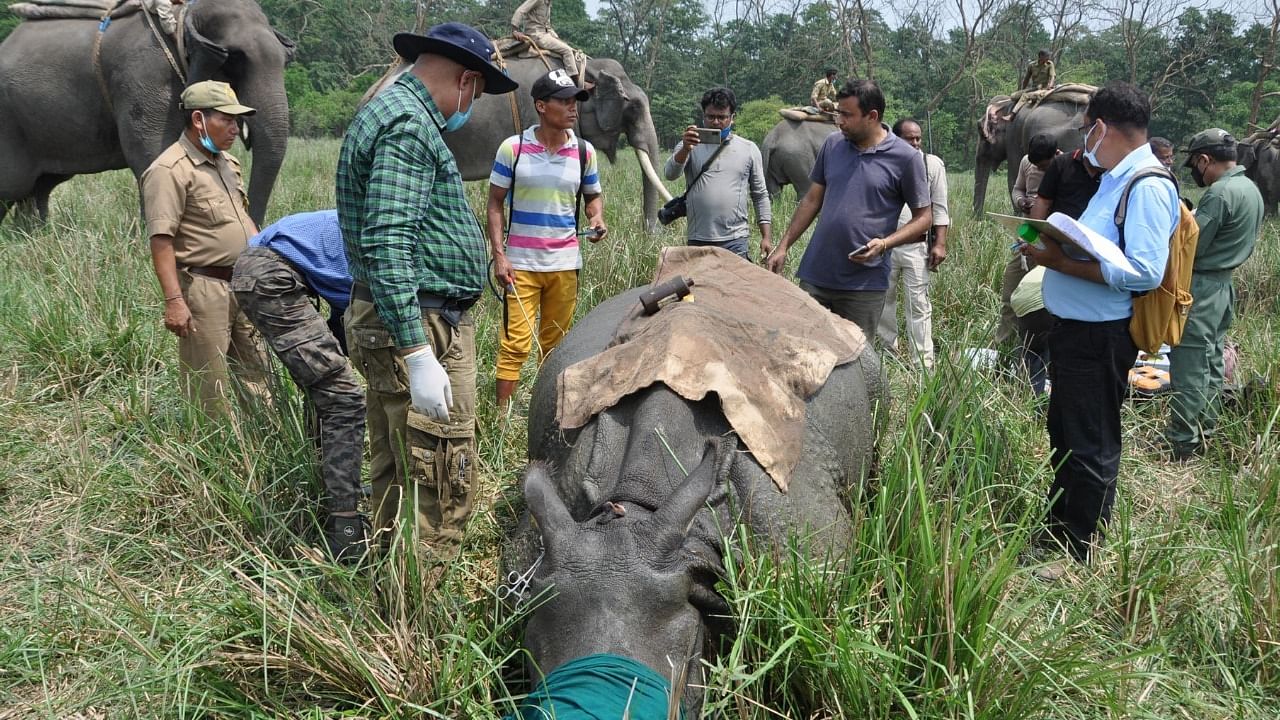
At least 22 one-horned rhinos have been translocated within Assam since 2008 under the Indian Rhino Vision (IRV) 2020 program but the exercise could have slightly missed its target to increase rhino population to 3,000 in the state's seven protected areas.
Two rhinos were caught at Pobitora Wildlife Sanctuary on Monday for releasing them in the Manas National Park, about 200-kilometres away. The 38-odd sq. km Pobitora, situated about 50 km east of Guwahati has 102 rhinos. At least 20 rhinos were earlier translocated to Manas, mainly from Kaziranga National Park, where the 2018 Census found 2,413 rhinos. The 884 sq. km Kaziranga is the world's biggest home for one-horned rhinos. The translocation increased Manas' rhino population to 46.
Orang National Park, another habitat of the rhinos in Assam was found to have 101 rhinos in 2018.
IRV 2020 was designed by Rhino Task Force 2005 with a target to achieve rhino population to 3,000 in seven protected areas in Assam. Another goal was to reduce the risk to the rhino population, mainly from poachers by spreading the population in multiple parks with enough habitats to encourage population growth.
"We might have slightly missed the population target. So we have decided to place a proposal for IRV-2 after the new government takes charge in Assam. We plan to carry out similar exercise in Laokhowa Burasapori, Panidihing and Dibru Saikhowa National Park," MK Yadava, chief wildlife warden, Assam told DH on Monday while stating that IRV 2020 concluded with the process to translocate the two rhinos. "The new translocation will, however, be done keeping in mind the infrastructure and security situation," Yadava said.
IRV 2020 was a joint programme of the Assam Forest Department, Worldwide Fund for Nature India (WWF-India) and the International Rhino Foundation. The program was implemented with the help of the forest department, College of Veterinary Sciences, WWF India, IRF, WTI, Aaranyak and others, he said.
Bibhab Kumar Talukdar, a rhino specialist and CEO of Aaryanak, a biodiversity conservation group in Assam told DH that the population of rhinos could have been close to 3,000 by the end of 2020 if the census was carried out last year. "The last rhino census was done in February-March 2018 which found 2650 rhinos in Assam. In 2020, the census could not be carried out due to the pandemic. Definitely in two years, rhino population increased at the rate of 3 to 5 per cent per year," he said.
"The translocation of rhinos to Manas and e-establishment of a breeding population there has made immense contribution to the conservation of the species," Yadava said.